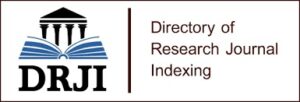Socioeconomic Factors on the Prevalence of Cutaneous Leishmaniasis in Dir, Upper Dir, Pakistan
The prevalence of Cutaneous Leishmaniasis (CL) in Dir, Upper Dir, Pakistan, exhibits notable variation across different areas, influenced by gender and occupation. Areas like Gogyal, Shaibabad, and Chapper, with male populations, reported the highest infection rates, with males mainly affected ranging from 20% to 22%. In contrast, regions such as Serai, where the population is female, exhibited higher infection rates in females, such as the 40 cases in Serai with an 18% prevalence. Additionally, areas with mixed gender distributions, like Wari and Dislawar, show more balanced infection rates between males and females, averaging around 15%. Further, it illustrates that occupational factors are critical in infection rates. Farming communities like Gogyal and Shaibabad, with a higher proportion of males working as farmers, exhibit the highest prevalence rates, up to 22%.
In comparison, students and workers, particularly in Wari, Kotkay, and Chapper, face moderate infection rates ranging from 10% to 21%. Homemakers, particularly in areas like Serai and Jelar, also show a significant impact, with 18% and 17% rates, respectively. These findings highlight the intricate interplay of gender, occupation, and regional socioeconomic conditions, underscoring the importance of tailored health interventions to address the unique needs of each community.
Keywords: Cutaneous Leishmaniasis, Upper Dir.




















